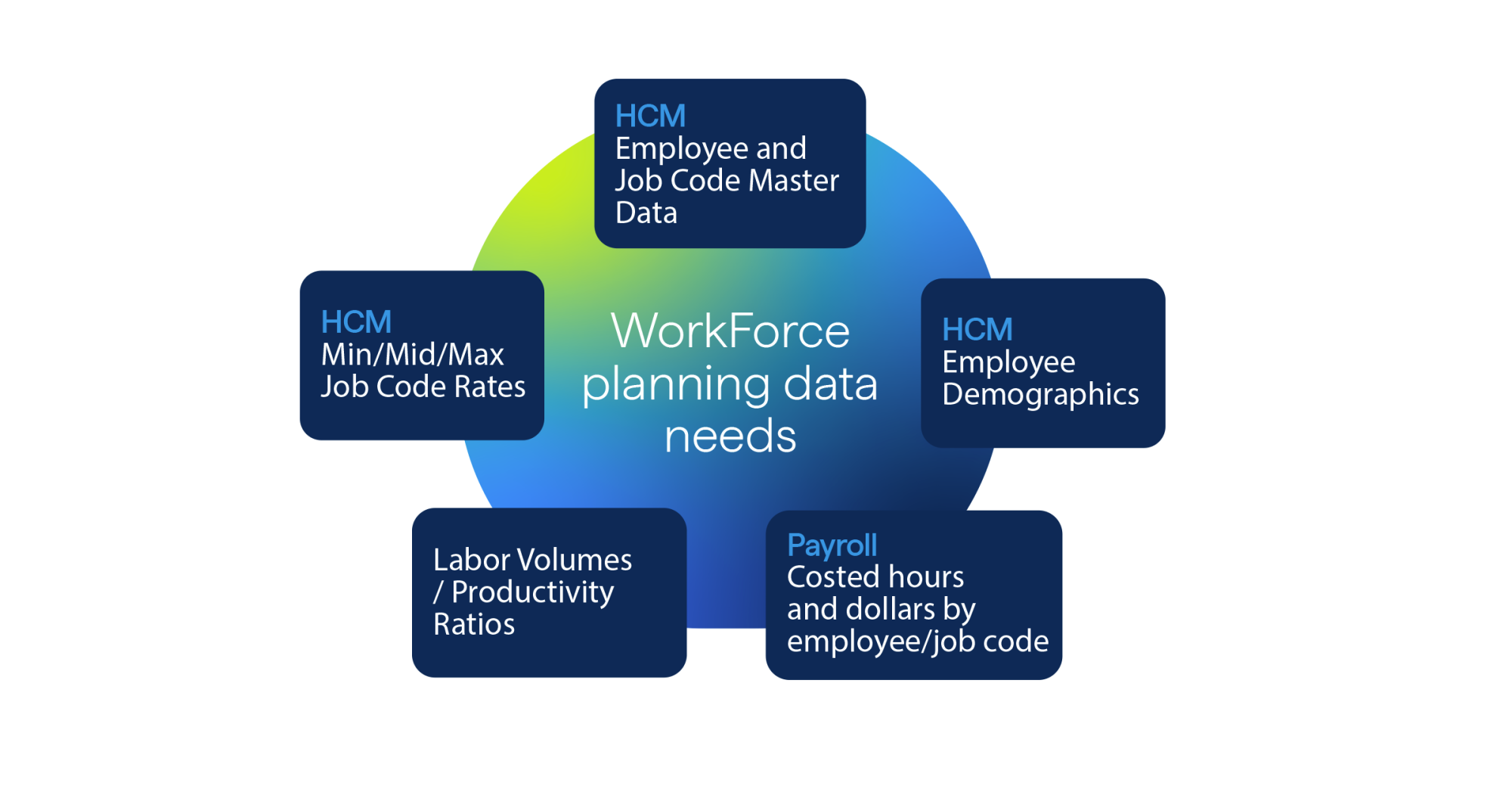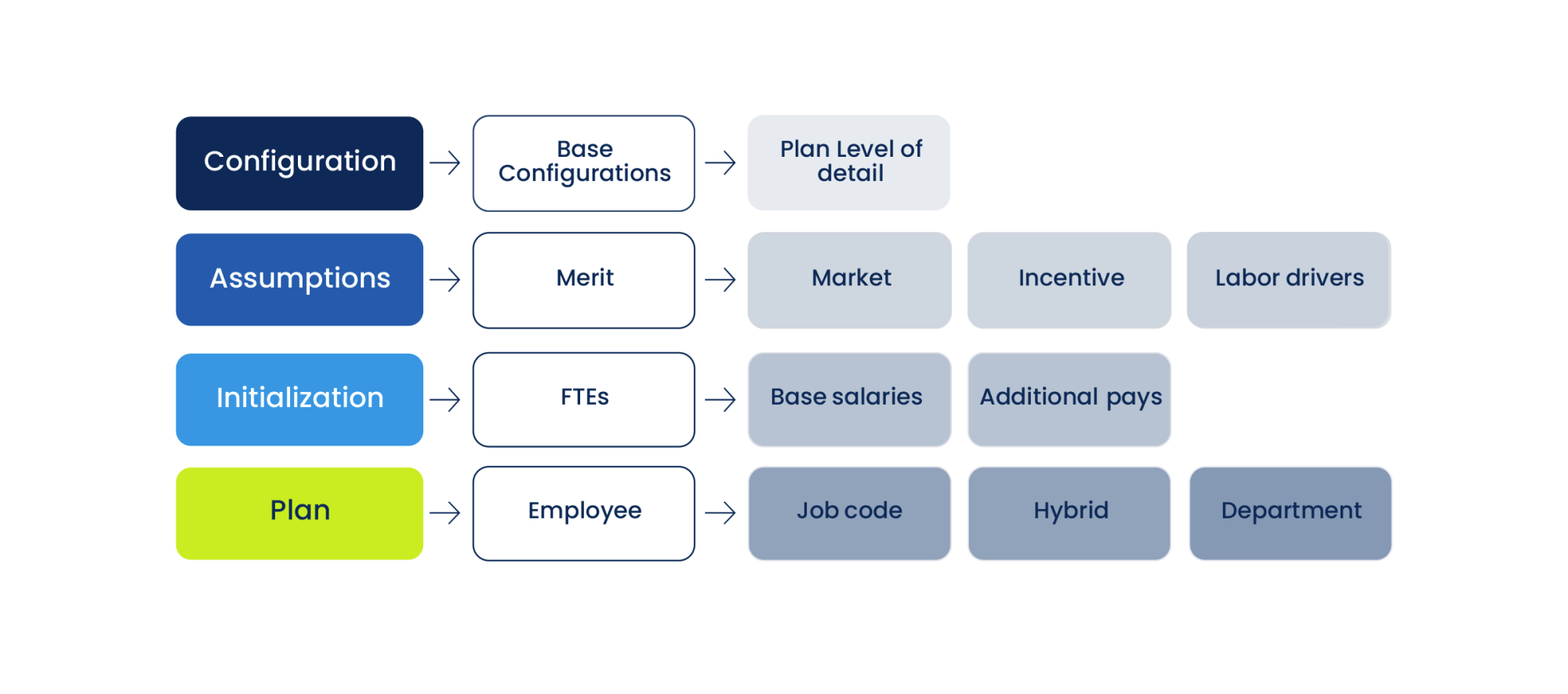The first blog post in this series - Pillars of a strategic workforce strategy for healthcare organizations – introduces three key pillars that work together to create a strategic workforce strategy, integrating planning and budgeting solutions with human capital and payroll systems to provide clear insight using actual data to help healthcare companies drive more efficient and accurate business decisions. The second blog post in the series - Agility, efficiency, and transparency in HR - explores the first of these three pillars: a world-class HCM solution – and how it can benefit your healthcare organization. This blog post addresses how an integrated planning process with your HCM and Oracle payroll system is crucial for a dynamic experience and focuses on the interoperable needs that are required between these systems to minimize the manual touchpoints by the planning users and administrators.
Labor continues to be the largest expense healthcare systems have. Whether it is increased agency costs or higher pay for clinical and professional staff to retain or attract resources, this cost will continue to increase and/or be a challenge. The resulting effect reinforces the need for a data-driven approach to the planning process to make sure your organization is aligned to what is really happening.
Data driving the labor planning process
To effectively reach a state where data is driving the process, you need to be able to integrate with the data sources that provide not only relevancy but also transparency. When we do our implementations, our primary focus is on automating the collection/integration of this data for our clients. We do this through our integration accelerators coupled with the embedded data integration tools that Oracle provides.

Employee & job code master data
You need the metadata to support data loading. Additionally, whether you want to plan by employee or higher levels such as job code/job class, having both levels of grain supports the user. Each component provides the user with value:
- The unique approach enables hybrid planning by employee and/or job code.
- The ability to flex variable labor staff.
- Transparency into the data that supports the plan.
Employee demographics
The goal of this data element is not to replicate your HCM system but instead to recognize the need to have employee level information to support the planning process such as salary type, termination dates, and standard or scheduled FTEs and hours.
Min/Mid/Max job code rates
Labor planning involves various employee movements such as job changes, new hires, and department transfers. Leveraging loaded rates allows the system to calculate the proposed salaries of these newly created labor plans.
Payroll costed hours & dollars
Every organization has a preferred level of planning grain for the labor plan. Whether you want to plan two labor buckets or twenty, loading the detail by the appropriate earning code summary detail allows the organization to pre-populate the plan by the critical workforce details that are relevant at the time. This reflects what is happening within the organization so you are as close to the real world as you can be based on what the employees are doing.
Labor volumes / productivity ratios
Leveraging volumes that drive labor coupled with productivity labor management ratios, your loaded payroll information can be used to reflect the variability of staffing needs.
Powerful workflow for hybrid labor planning
Data is the key to driving the planning process and having it aligned to what is happening in your organization. Wrapping a defined, configurable process around all that data to seed the budget and give clients options to their planning is the other big challenge healthcare organizations face. In the process below, we are giving clients the ability to update configurations based on how the business wants to drive the process, update strategic assumptions in various levels of grain, and utilize the power of industry-defined business rule calculations to baseline the budget. The last piece allows for the flexibility to plan at employee, job code, department, or hybrid levels.

Please reach out to our team of healthcare experts to help your organization provide a robust level of transparency in your workforce planning process. The next blog post in this series focuses on the last of the three key pillars that work together to create a strategic workforce strategy: strategic workforce planning.
About Oracle Enterprise Performance Management (EPM) Planning
Oracle EPM Planning is a solution that provides a unified view of financial, operational, and line of business planning. It improves planning accuracy and makes your company more agile. The solution uses advanced technologies such as AI, machine learning, and predictive analytics to integrate real-time data into planning, eliminating delays in decision-making. Oracle Planning is a budgeting and planning solution that provides functionality including streamlined data entry, a calculation engine, and an efficient budget review process.
About Oracle Cloud Human Capital Management (HCM)
Oracle Fusion Cloud HCM is a complete cloud solution that connects every human resource process—and every person—across your enterprise. We help you create a community where people feel valued, heard, and like they belong. With a single user experience and data model and seamless processes and AI-embedded infrastructure, Oracle Cloud HCM can help you redefine what “best” looks like for your people. Oracle Fusion Cloud HCM is different from other HCM providers on the market. It is the broadest and deepest suite offering everything you need, including a best-in-class employee experience, cloud-native infrastructure, and continual innovation, which leads to a more productive workforce, happier customers, and a more profitable business.
Why successful healthcare organizations are leveraging HCM technology
Contract labor costs for hospitals have increased dramatically - more than 258% - from 2019 to 2022, negatively affecting the bottom line for healthcare systems that are dealing with unique care delivery for patients and consumerism in the market.
Organizations continue to encounter rising costs and staff shortages; while healthcare has topped the list of job cuts recently, there is an increase in hiring. The result is a fluctuation in staff and the critical skills needed to provide quality care to patients.
From branding and recruitment to retention and succession planning, successful companies take a wholistic and combined approach to their HCM and payroll needs. Many organizations view their HCM technology as a gateway to digital transformation for the entire company for greater efficiency, lower costs, improved productivity, and an increased employee experience.
